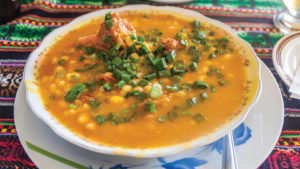by Ruth Tobias
Argentina’s rugged landscape is, for many, the stuff of romance. Anchored by the Andes Mountains and blanketed by the pampas, or grasslands, it evokes dusty, sepia-toned images of Patagonian shepherds tending to their flocks and gauchos gathering for an asado, roasting joints of beef on vertical iron rods over an open fire.
For the European winemakers who came here to escape phylloxera (not to mention political strife), the romance was tinged by a fair share of challenge. Farming at lower altitudes means dealing with frequently excessive heat; higher altitudes—indeed, some of the highest in the world for viticulture—mean contending with all the usual difficulties of high-elevation farming, both climatic and logistic. But facing obstacles is what winemakers do, and the industry has flourished here. Though Malbec has its origins in France, it has Argentina, particularly Mendoza, to thank for its rejuvenation over the past few decades; the same goes for the Douce Noir descendant Argentinians call Bonarda. Many other international grapes have succeeded here too, including Cabernet, Chardonnay, Sangiovese, and Tempranillo. And then there’s the native white Torrontés, which shines in Salta.
Alongside this vinous bounty, indigenous and European foodways have merged to create

the cuisine of Argentina today. Italian influence shows in the popularity of milanesa, which Argentinians have made their own along with ñoqui (gnocchi) and pizza in the form of stuffed fugazzeta. They also claim far more fame for empanadas than do the Spaniards who brought them. Meanwhile, their own wildly versatile green sauce, chimichurri, has gone global; so has their milk caramel, dulce de leche. But beef remains king, from the rustic mixed grill called parillada to the elaborate stuffed flank steak known as matambre. And its pairing with Malbec stands as one of the world’s great food-and-wine marriages.
But it’s not only big, bold red wines and high-quality grass-fed beef that deserve praise, there’s another side to the country’s cuisine for wine lovers to explore: white wines and the foods that pair with them.
Many thousands of Argentina’s vineyard acres are planted to grapes like Sauvignon Blanc, Chenin Blanc, and Pinot Grigio. The crisp wines they yield work well with traditional dishes such as tartas—savory, flaky pies filled with the likes of spinach and Swiss chard or chicken. Another fine match is the humita; this simple, tamale-like corn cake bursts with flavors that call for the fruity grassiness of a Sauvignon Blanc.
Those who are familiar with Argentina’s white varieties, though, surely know Torrontés, which makes a white wine full of floral, fruit flavors. They may also know locro, a thick, hearty stew that’s a favorite among Argentinians.

Though it does contain meat—beef or pork, chorizo or tripe—locro is based on hominy, beans, squash (often pumpkin), and other vegetables, herbs, and spices, along with a specific type of potato: the papa chola, an indigenous tuber with red skin and butter-yellow, subtly sweet flesh that grows best in Argentina’s warm northern climes.
Is it just chance that the country’s national dish goes so well with its most popular white wine, Torrontés? Both have floral, almost sweet aromas. But a taste of the stew reveals the deeply savory flavors that, combined with the crisp finish of the wine, make pairing these two national treasures such a unique Argentinian experience.
